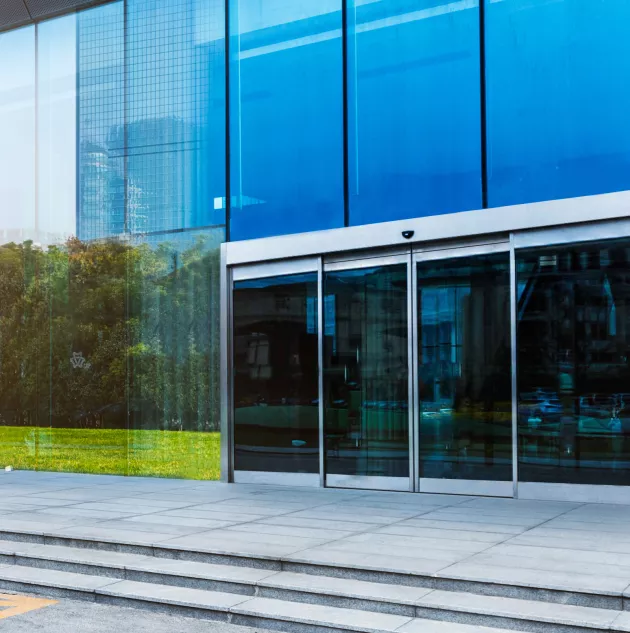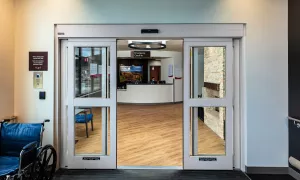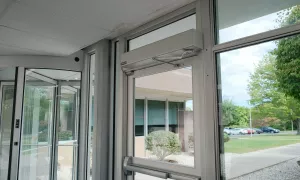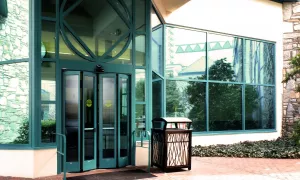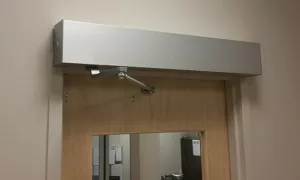Automatic Door
Selection Guide
Helping You Find the Right Automatic Door for Your Unique Space
STANLEY Access Technologies manufactures and installs various types of automatic doors that slide, fold, swing, revolve. The type of automatic door you need depends on your unique space and application.
Which Door Do I Need?

- Location: Interior vs. exterior installation?
- Traffic: Will your door open and close hundreds or thousands of times each day, or just a few?
- Construction: Is your project a new build or a retrofit?
- Space: Is space unlimited or are there constraints to how tall or wide your door can be?
- Security: Does your space require access control to prevent unwanted entry? Or laminated glass to protect against break-ins?
- Building Codes: Code requirements or standards will determine which type of door is right for your application. For example: ADA, IBC, IECC, ANSI 156.19 or 156.10.
- Efficiency: Energy efficiency goals such as improved thermal performance [U-factor, SHGC] and air infiltration [ASTM E283]

Interior vs. Exterior
It is important to understand which doors are ideal for interior vs. exterior. For example, energy efficient automatic sliding doors that control air infiltration and provide thermal performance, are not necessary for an interior application. Other examples of exterior doors are hurricane-rated automatic sliding doors and blast-rated automatic sliding doors.
Limited Space
When space is limited, telescoping automatic doors and single slide doors offer narrow widths while providing a wide clear door opening.
- DuraFit Telescoping Automatic Door, as narrow as 6’
- Typical single slide and 3-panel telescopic doors, available at 7'
- Dura-Glide Single Slide: Various options available
For rough openings narrower than 6’, consider surface applied products. With surface-applied automatic sliding doors, it is important to consider wall space. Wall space must be clear of obstructions and there must be a continuous floor to allow the door panels to slide open.
For very narrow openings, such as a standard 36” rough opening, consider adding a swing door operator to the manual door.
- M-Force Swing Door Operator is for applications that require full or low energy, have door panel weight up to 700lbs.
- Magic Access Swing Door Operator is for low energy applications only. Low energy swing door operators automate via a knowing-act, such as push of a button or wave of a hand.

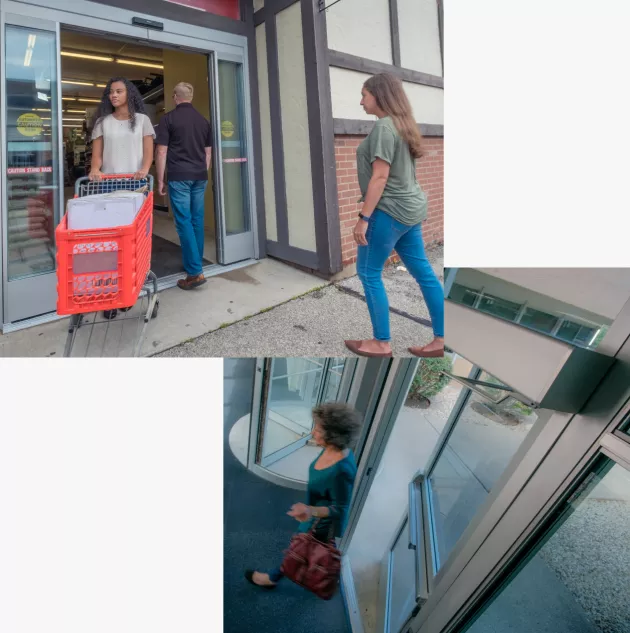
High vs. Low Traffic
Retails store fronts, airport entrances, and healthcare corridors are examples of applications where automatic sliding doors can help accommodate high traffic, specifically simultaneous two-way traffic flow. Automatic doors are an effective way to control directional traffic situations such as one door for entering and one for exiting.
- Sliding automatic doors are a very efficient way to accommodate simultaneous two-way traffic flow. It can also be effective in controlling directional traffic situations such as one door for entry traffic and another door for exit traffic.
- Low energy swing door operators are the ideal solution for applications where traffic is typically light, but buildings wish to achieve ADA compliance. Low energy swing door operators, which activate through an act such as pushing a button, are great for low traffic applications, not high traffic.
- Full energy operators are fully automatic, meaning they open when approached. Full energy swing doors are good for high traffic applications, but only for 1-way. The industry does not endorse the use of automatic swinging doors for two-way traffic applications due to (over the top) safety systems. Exceptions are made; however, the application must be well planned in consultation with experienced designers with perhaps a remote switch / push plate to activate the door well in advance of an approach.
Codes & Certifications
Depending on your location, building type etc., codes and requirements such as ADA, IBC, IECC, ANSI 156.19 or 156.10 come into play. STANLEY Access Technologies can guide you to the right door to meet your unique installation code requirements. Our spec writing team is ready to help. Read More
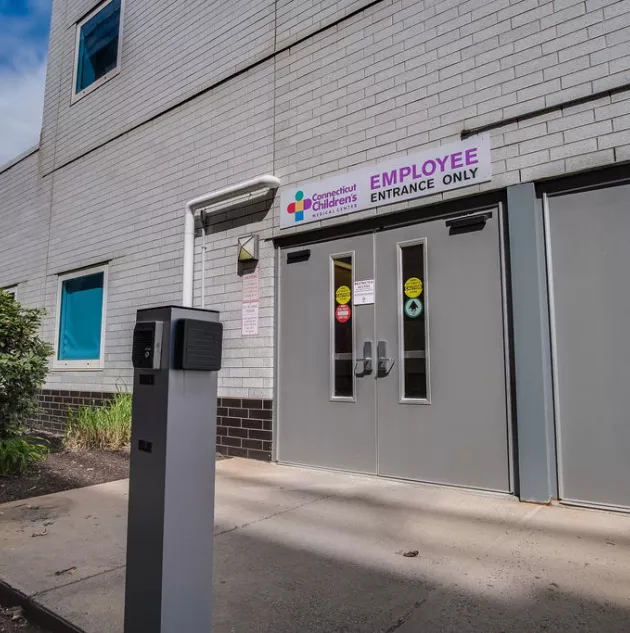
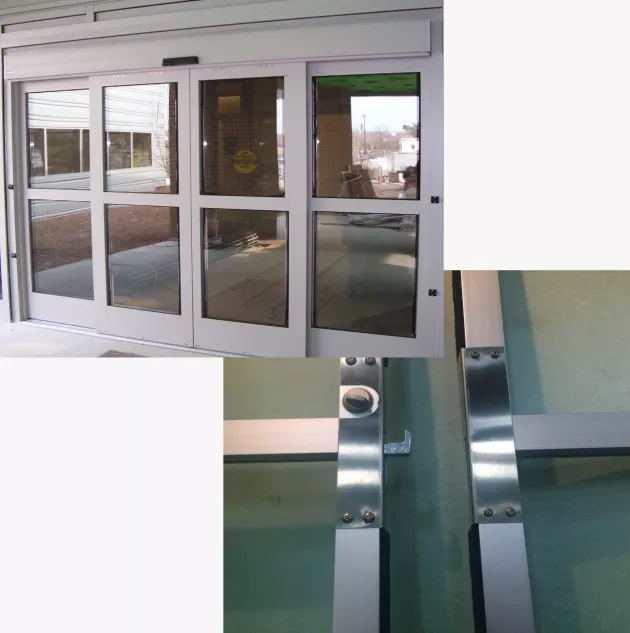
Security Requirements
Depending on the use case, some applications may benefit from or require security features to provide protection and peace of mind. For enhanced off-hours security at locations such as big box retail, these security enhancement options will help protect your exterior automatic sliding door or telescoping automatic doors from forced entry.
- Armored Strike Retrofit Kit 8-ply laminated stainless steel bolt assures maximum resistance to forced entry attempts. Durable 16-gauge stainless steel.
- Lock Guard wrap adds rigid reinforcement to lead stiles.
- Security Strobe utilizes registered CometFlash® 75 pattern for alternating left-right visual deterrent.
The Dura-Shield Blast was developed in partnership with Insulgard® Security Products to provide protection from blast attacks. For buildings where automatic sliding entrances are required to protect high risk areas, the Dura-Shield Blast door provides enhanced security tested to Department of Defense Anti-Terrorism Standards.
Energy Efficiency
Energy efficiency goals such as improved thermal performance [U-factor, SHGC] and air infiltration [ASTM E283] are an important consideration to specifying the right door for your building. Our Dura-Glide GreenStar can help you meet your eco-friendly and energy saving goals.
- Improve air quality, occupant health and comfort by decreasing air infiltration by over 60%*
- Increase thermal performance
- Improve building energy efficiency
For LEED credit calculation on your project, contact your local STANLEY Expert.
